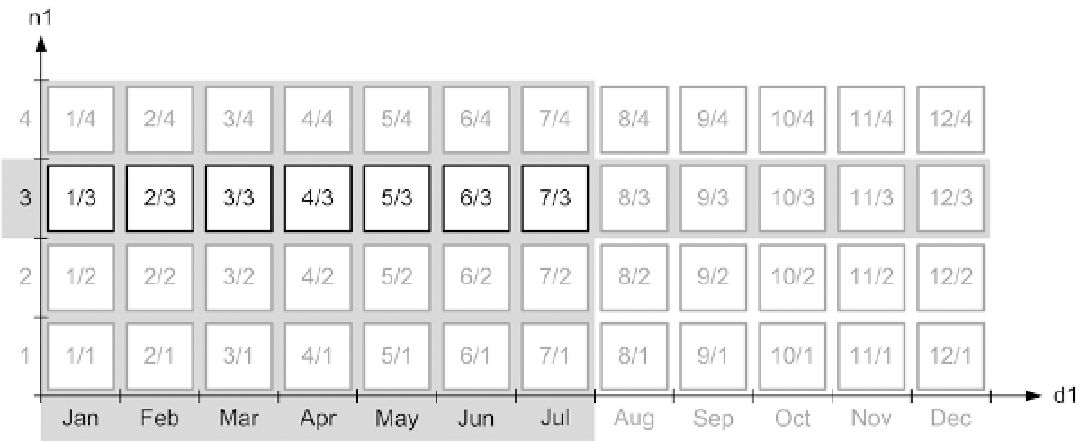Database Reference
In-Depth Information
accessed. Figure
13-10
shows this behavior. Notice how the values in the
Pstart
and
Pstop
columns match the result
of the previous query when executed against the data dictionary:
SELECT * FROM t WHERE n1 = 3 AND d1 < to_date('2014-07-19','YYYY-MM-DD')
------------------------------------------------------------------
| Id | Operation | Name | Starts | Pstart| Pstop |
------------------------------------------------------------------
| 0 | SELECT STATEMENT | | 1 | | |
| 1 | PARTITION RANGE ITERATOR| | 1 | 1 | 7 |
| 2 | PARTITION LIST SINGLE | | 7 | 3 | 3 |
|* 3 | TABLE ACCESS FULL | T | 7 | KEY | KEY |
------------------------------------------------------------------
3 - filter("D1"<TO_DATE(' 2014-07-19 00:00:00', 'syyyy-mm-dd hh24:mi:ss'))
Figure 13-10.
Representation of composite partition pruning
Design Considerations
As described in the previous sections, the query optimizer can take advantage of partition pruning in a wide range
of situations. Table
13-1
summarizes when partition pruning occurs for each type of partitioning method and for the
most common SQL conditions.

